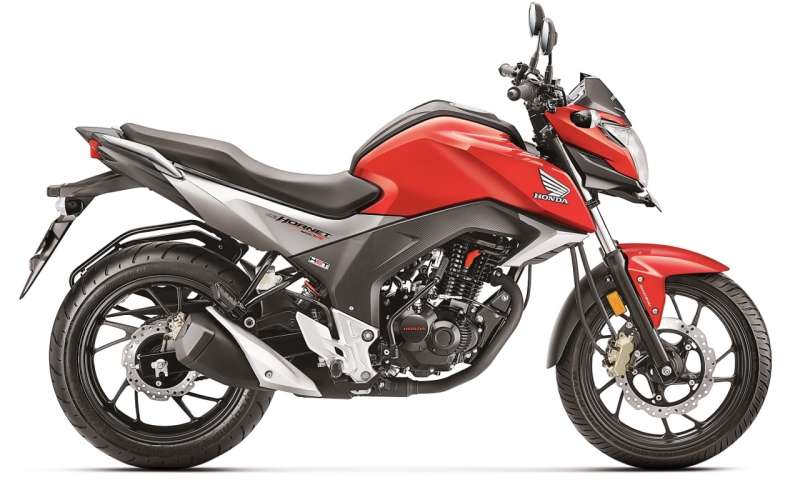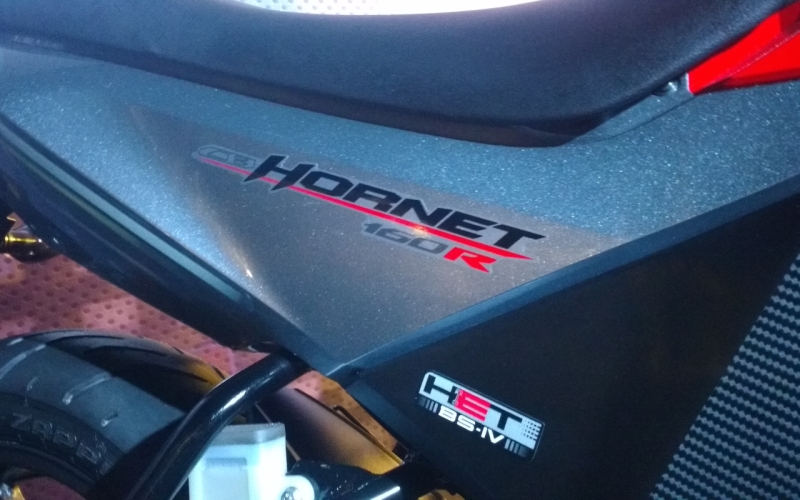 Honda have injected a fresh dose of cool in the street-muscle segment with the new CB Hornet 160R, from Rs 79,900 (ex-Delhi).
Honda have injected a fresh dose of cool in the street-muscle segment with the new CB Hornet 160R, from Rs 79,900 (ex-Delhi).
The new CB Hornet 160R is, by far, the best looking 160 from Honda yet. The company failed to dazzle us with their first premium commuter turned sport-muscle bike, then pulled the Trigger too. In its wake comes the new Hornet.
Put the name and what we’re used to aside and the 160R is actually a creditable machine. It’s smooth, refined, and very powerful for its category. No, Honda didn’t just dump the new Unicorn’s 160 motor in the Hornet, they R’ed it up first.
The air-cooled and carburetted long-stroke motor actually revs even higher and delivers 15.88 PS at 8,500 RPM (against 14.71 at 8,000 in the CB Unicorn) and also churns out 14.76 Nm of torque – best in its segment and even more than the Pulsar 180. It’s also BS-IV compliant, making it as clean as it is mean. It also has the fat rubber most people are looking for. The angular design, smooth lines in the right places and muscular cues on the tank and panels make it an attractive offering.

We’ve ridden the bike in Goa and came away impressed. It’s punchy and actually packs a meaty mid-range to match its street-muscle credentials. The flat handlebars, wide tank and 140-section rear rubber all make for an appealing naked bike, which will surely take the fight to the Suzuki Gixxer and Yamaha FZ-S. It goes quick, handles well and feels big too. The digital rev-counter is another cool element. The engine revs freely and is very refined. The suspension felt quite stiff, but can be adjusted to suit riding habits. Overall, it’s a capable performer and has a good amount of power and torque, both in the mid- and top-end as well.
The CB Hornet 160R is available in two variants: standard disc-drum at Rs 79,900, or the CBS at Rs 84,400, both ex-showroom, Delhi. The CBS variant has a 276-mm front petal disc, a 220-mm rear petal disc and Honda’s combined braking system (CBS) for the most effective braking, distributing braking force to the front and rear wheels simultaneously by means of a three-pot front brake calliper.
Watch out for the full ride story in the January 2016 of Bike India magazine, on stands in the last week of this month. More will be revealed from our road test later.
Story: Jim Gorde


Leave a Reply